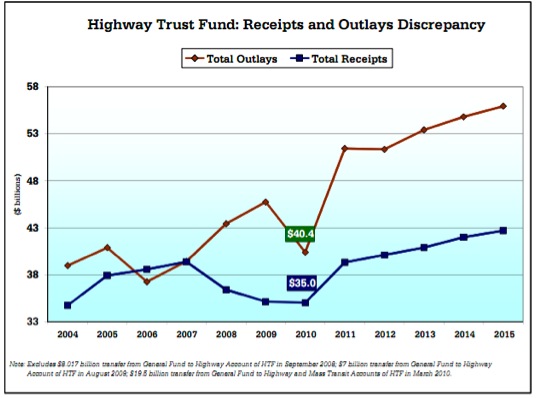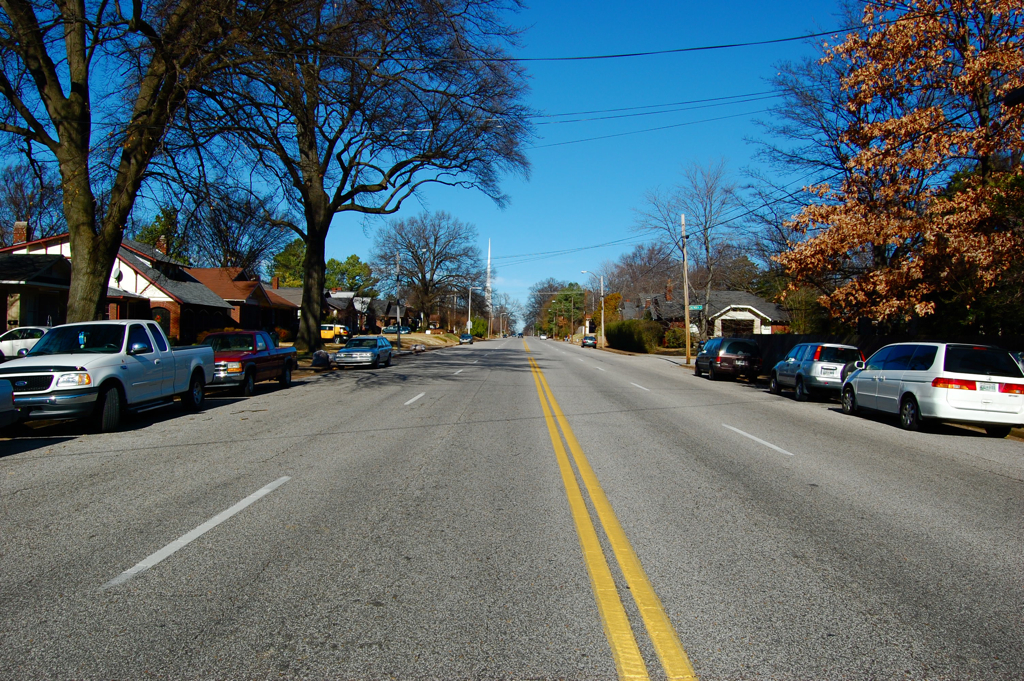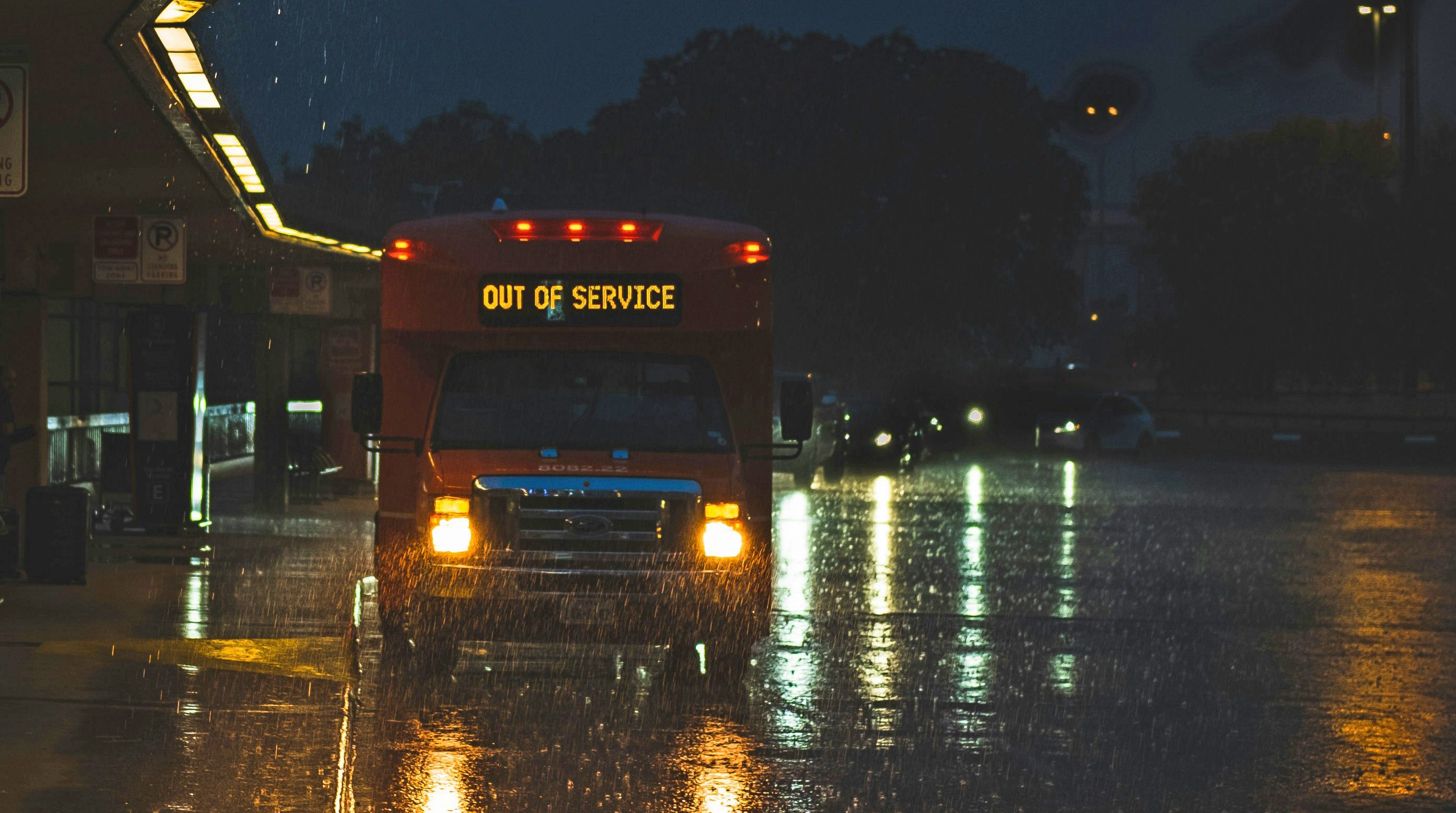The Problem: Highway Trust Fund revenues only cover about 44 percent of the transportation system’s needs.
The Solution: an alphabet soup of funding and financing mechanisms (they’re different!) which, if used optimally, could supplement gas taxes and tolls and boost transportation investment.
The American Association of State Highway and Transportation Officials (AASHTO) just came out with the report from their September 30 conference on “Funding and Financing Solutions for Surface Transportation in the Coming Decade” [PDF]. As Congress prepares to start crafting a new transportation authorization and the Republican majority in the House has taken a hard line on spending cuts, it’s an appropriate moment to talk about where the money’s going to come from for a new bill – even the modest one that is likely to emerge.
After all, as AASHTO points out, “Without three intra-governmental transfers from the general fund of the U.S. Treasury, totaling $34.5 billion since 2008, balances in the Highway and Mass Transit Accounts would have fallen close to zero over the course of the last several years.” The current Congress will be loathe to authorize further bailouts of the Highway Trust Fund, which supplies nearly 90 percent of federal surface transportation funding, including transit and bike-ped projects.
In turn, nearly 90 percent of the HTF funds come from motor fuels. Fuel efficiency and less driving – while both good things – have contributed to the crisis in transportation funding, as gas tax revenues have dropped. The recession was a heavy blow as well, since truck sales declined and, along with them, HTF revenues derived from a sales tax on new trucks. And lawmakers on both sides of the aisle have rejected repeated calls from experts to raise the gas tax or move to a vehicle-miles-traveled fee. Right now, the highway trust fund balance is growing at less than half the rate of inflation.
Participants in the September AASHTO forum agreed, according to the report, that the gas tax will continue to be a key source of transportation funding, though they were excited about a VMT fee too. But a main theme of the conference was exploration of other alternatives.
The authors distinguish between financing and funding:
Funding means revenue available to pay for investment in transportation assets or programs. Financing relates to the use of financial tools or techniques to leverage project revenues, accelerate project development, and match the costs and benefits of long-lived assets.
Federal transportation spending from the Highway Trust Fund dipped last year due to hesitation about the future of funding given the delayed reauthorization, as well as the use of recovery act dollars to fund transportation projects. Next year could see greater pressure on the HTF, with stimulus money gone and state DOTs ready to get started on projects that have built up in their pipelines.
In addition to traditional funding sources, ideas for future funding included freight-related taxes, a national sales tax, and annual transfers from the general fund. A variety of road pricing techniques, from traditional tolling to congestion pricing, are options, as well as value capture strategies to encourage beneficiaries of transportation investments to help pay their costs.
As for financing, in addition to existing tools like TIFIA and Build America Bonds, the report authors see potential in tax credit bonds and a national infrastructure bank.
Tax credit bonds currently exist for forestry conservation and new school construction, among others, but not for transportation. The bonds would have the federal government pay some of the interest in the form of tax credits, reducing costs for the borrower.
They also held out hope for greater private sector participation. This is a page out of Transportation Committee Chair John Mica’s playbook. He’s a big fan of public-private partnerships (P3s) as a way to leverage public money and bring in private industry.
AASHTO’s report doesn’t take sides in the conversation about funding and financing tools. They take more of a spaghetti-to-the-wall approach – just try everything and see what sticks. In order to get a surface transportation bill with adequate investment for the wide range of needs in this country, it will need to be paid for – one way or another.






